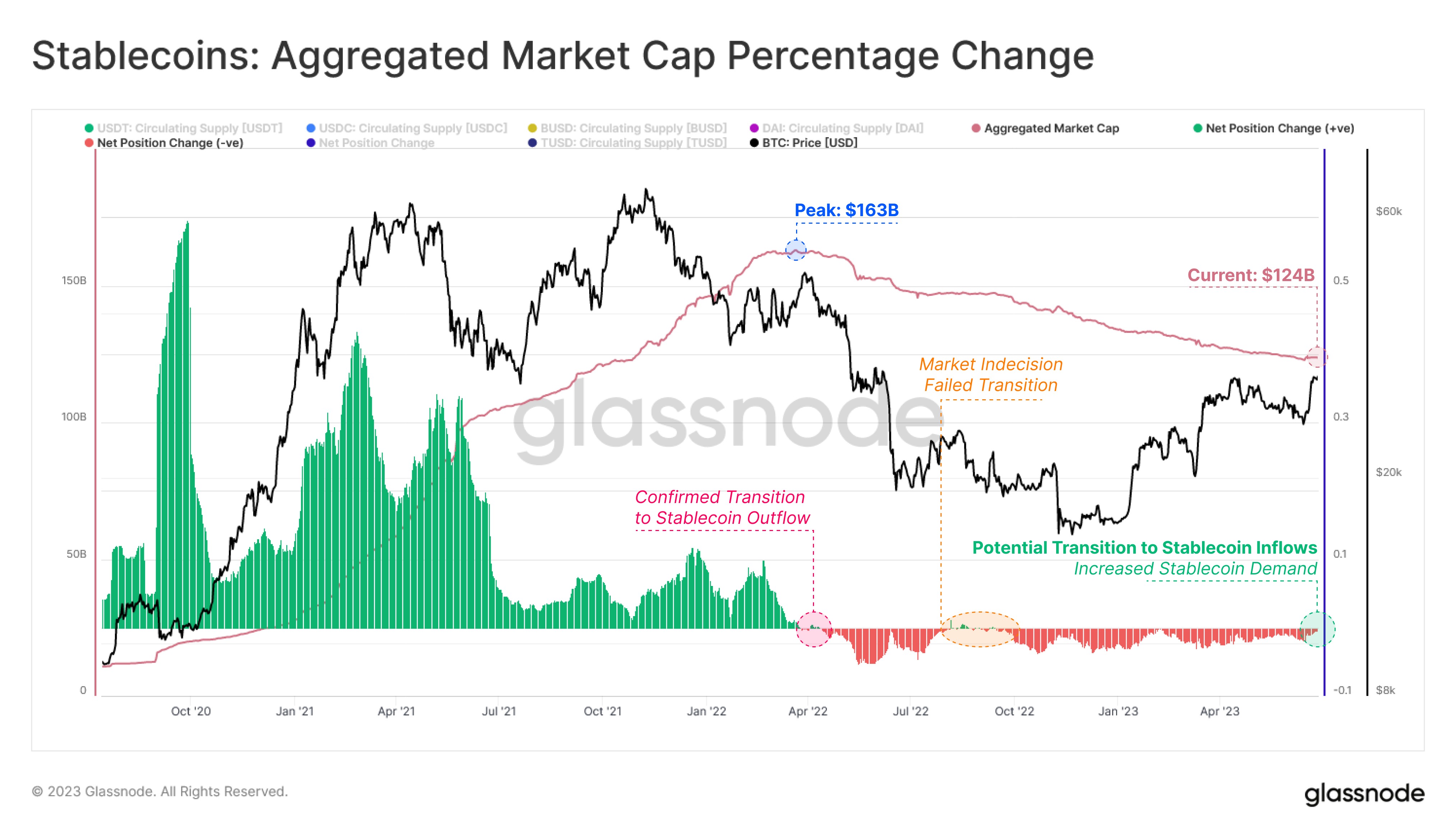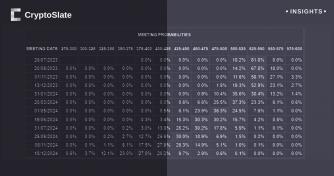Data shows the stablecoin market cap has returned toward equilibrium and may be gearing up for a reversal. Here’s how Bitcoin could benefit from this.
Aggregate Stablecoin Market Cap Change Has Returned To Equilibrium
According to data from the on-chain analytics firm Glassnode, the aggregate stablecoin market cap had previously been in a decline for around 14 months. The “aggregate stablecoin market cap” here refers to the combined market cap (that is, the total valuation in USD) of the top five stables in the sector.
More specifically, the relevant stablecoins in the current discussion are Tether (USDT), USD Coin (USDC), Binance USD (BUSD), Dai (DAI), and TrueUSD (TUSD). The complete supply of these stables is considered here, regardless of how it is distributed among the different blockchains.
Related Reading: Bitcoin Rally Stalls As Short-Term Holder Exchange Inflows Intensify
Historically, the combined market cap of these assets has held important information for the sector, as it can provide hints about whether capital is flowing into or out of the market right now.
To track the flow of capital, Glassnode has looked at the 30-day percentage change in the aggregate market cap of these fiat-tied tokens.
Here is a chart that shows the trend in this indicator over the past few years:
Naturally, when the value of this metric is positive, it means that the top 5 stablecoins have registered net inflows during the last thirty days. On the other hand, negative values imply outflows have taken place in the past month.
From the graph, it’s visible that the 30-day percentage change in the aggregate stablecoin market cap was quite positive during the 2021 bull run. This would imply that these assets were constantly seeing an expansion in their supplies in this period.
Usually, investors make use of stables whenever they want to escape the volatility associated with other cryptocurrencies. Such holders keep their capital in the form of these assets until they want to buy back into a volatile coin like Bitcoin or withdraw into fiat. Obviously, in the former scenario, the purchasing can have a positive effect on the price of the asset they are shifting into.
During bull markets, a ton of capital flows into the sector, which is what helps sustain such rallies. Thus, it’s not a surprise that the stablecoin supply observed expansion during the 2021 bull run.
As the bear market began in 2022, however, the indicator’s value decreased toward the zero level, implying that the outflows started to equal the inflows. A confirmed transition toward net outflows then occurred, as the bearish period kicked into full gear.
There was a small period during the relief rally in the middle of the year where the 30-day percentage change again approached the zero market. A transition toward inflows, however, failed, and the indicator became negative once more.
The negative values have continued until now, meaning that these top stablecoins have been observing net redemptions for 14 straight months. Recently, though, the metric has again neared equilibrium, meaning that there is potential for breaking into the inflows regime.
It’s unclear whether this reversal will be complete, or if a rejection will happen like during the aforementioned relief rally. If the stablecoin market cap does begin to see an expansion, then it would be a bullish sign for Bitcoin, as it would mean that there is now more capital present in the market in the form of the stables, which may be used to purchase the asset.
BTC Price
At the time of writing, Bitcoin is trading around $30,400, up 1% in the last week.











